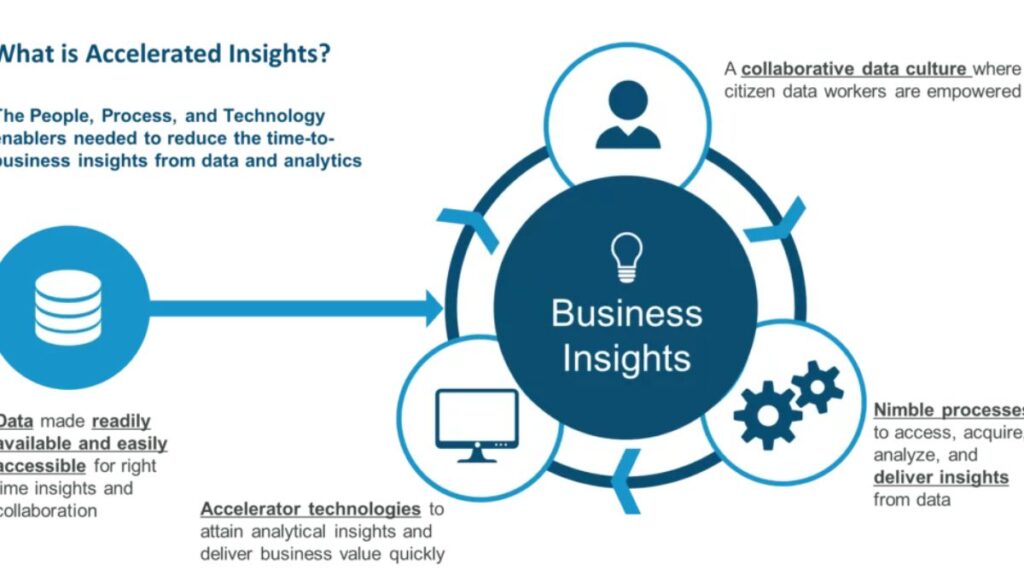In today’s data-driven world, organizations across industries are continually tasked with leveraging data to make informed decisions. Data analytics has evolved into a vital tool that enables businesses to interpret raw numbers, revealing valuable insights that drive strategies, improve operations, and foster growth. But the true value of data lies not just in the numbers themselves, but in how businesses turn them into actionable insights. This article explores the pivotal role of data analytics in turning numbers into business insights, highlighting its significance, processes, tools, and real-world applications.
The Importance of Data in Business Decision-Making
Businesses today are collecting more data than ever before. With the rise of digital tools and technologies, organizations can track nearly every aspect of their operations, from customer behavior to supply chain efficiency and beyond. The sheer volume of data available can be overwhelming, but with the right analytics approach, businesses can extract valuable information that drives decision-making.
In the past, business decisions were often based on intuition, experience, and anecdotal evidence. While these factors still play a role, they have been complemented by data analytics, which adds a layer of objectivity and precision to decision-making. By analyzing data, businesses can uncover patterns, trends, and correlations that would be impossible to identify through manual processes or traditional methods. This data-driven approach empowers companies to make smarter, more informed decisions that ultimately lead to better outcomes.
Understanding the Role of Data Analytics
Data analytics refers to the process of examining raw data with the purpose of drawing conclusions about that information. It involves using statistical methods and algorithms to explore, clean, transform, and model data in order to discover meaningful patterns, trends, and relationships. The goal is to convert data into insights that can inform decision-making.
The field of data analytics encompasses a wide range of techniques, from simple descriptive statistics to advanced machine learning models. Data analysts use these techniques to process vast amounts of data, often using sophisticated software tools that help streamline the process. These insights, once derived, can help businesses understand market trends, customer preferences, operational inefficiencies, and even predict future outcomes.
Types of Data Analytics
There are several different types of data analytics, each with its own set of methodologies and objectives. Understanding these different types is key to effectively turning numbers into business insights.
Descriptive Analytics
Descriptive analytics involves summarizing and interpreting historical data to identify trends and patterns. It is the most basic form of data analysis and focuses on answering the question, “What happened?” This type of analysis is often used in business to review past performance, such as sales, revenue, or customer behavior. Tools like dashboards, reports, and basic statistics are commonly used for this purpose. For example, a company might analyze its past sales data to determine which products were most popular in the last quarter.
Diagnostic Analytics
Diagnostic analytics takes a step further than descriptive analytics. It seeks to answer the question, “Why did it happen?” By analyzing historical data in greater detail, diagnostic analytics helps identify the root causes of specific outcomes or events. For example, if a company experiences a drop in sales, diagnostic analytics could help uncover the underlying reasons, such as a change in customer preferences or a disruption in the supply chain. This type of analysis requires more complex tools and techniques, such as regression analysis or data mining.
Predictive Analytics
Predictive analytics uses historical data and statistical algorithms to forecast future events or trends. It answers the question, “What is likely to happen?” By applying machine learning and advanced modeling techniques, predictive analytics can help businesses make predictions about customer behavior, sales trends, or even market shifts. For instance, a retail company might use predictive analytics to forecast demand for specific products during the upcoming holiday season, helping them optimize inventory levels and marketing campaigns.
Prescriptive Analytics
Prescriptive analytics goes beyond prediction by recommending actions businesses should take to achieve desired outcomes. It answers the question, “What should we do?” This type of analytics uses optimization algorithms and machine learning models to suggest the best course of action based on predicted outcomes. For example, prescriptive analytics might help a business decide which marketing strategy to use or which supply chain adjustments to make based on a forecasted dip in demand.
Tools and Technologies for Data Analytics
To turn numbers into business insights, companies rely on a variety of tools and technologies. These tools facilitate the collection, processing, analysis, and visualization of data. The choice of tool often depends on the type of analysis being conducted and the volume of data being processed. Here are some commonly used tools in data analytics:
Data Visualization Tools
Data visualization tools play a crucial role in transforming complex data into easy-to-understand visual representations. Graphs, charts, heatmaps, and other visual elements help decision-makers quickly identify patterns and trends. Tools like Tableau, Power BI, and Google Data Studio allow users to create interactive dashboards and visual reports, enabling businesses to communicate data-driven insights effectively.
Statistical Analysis Tools
For businesses engaging in descriptive, diagnostic, and predictive analytics, statistical analysis tools are essential. These tools help process and analyze large datasets, identify trends, and run complex statistical tests. R, Python, and SAS are popular tools for performing statistical analysis. With the help of these tools, analysts can uncover deeper insights, perform regression analyses, and develop predictive models.
Machine Learning Platforms
Machine learning is an increasingly important aspect of data analytics, particularly in predictive and prescriptive analytics. Platforms such as TensorFlow, Apache Spark, and scikit-learn enable businesses to develop algorithms that can automatically improve over time by learning from data. Machine learning models are capable of identifying intricate patterns in vast datasets, making them particularly useful for tasks like fraud detection, recommendation systems, and demand forecasting.
Big Data Platforms
Big data platforms are designed to handle vast volumes of data that traditional tools cannot process. Technologies such as Hadoop and Apache Spark allow businesses to store and analyze massive datasets efficiently. These platforms are critical for industries like healthcare, finance, and e-commerce, where large amounts of data are generated daily. By using big data technologies, companies can turn enormous quantities of raw data into valuable business insights.
Real-World Applications of Data Analytics
Data analytics is not just a theoretical concept but a practical tool that businesses apply in various real-world situations. Below are some of the key ways businesses leverage data analytics to drive decision-making and gain a competitive edge:
Customer Insights and Personalization
Understanding customer behavior is essential for businesses looking to improve customer satisfaction and drive sales. Data analytics enables companies to analyze customer data, such as purchase history, browsing behavior, and demographics, to gain a deeper understanding of their needs and preferences. Retailers, for example, use this information to offer personalized product recommendations, targeted marketing campaigns, and loyalty programs, all of which help foster stronger customer relationships.
Operational Efficiency
Data analytics helps businesses streamline their operations by identifying inefficiencies and bottlenecks. For instance, in supply chain management, analytics tools can be used to monitor inventory levels, predict demand fluctuations, and optimize delivery routes. In manufacturing, data analytics can help improve production schedules, reduce downtime, and minimize waste. By improving operational efficiency, businesses can cut costs and increase profitability.
Risk Management
Risk management is another area where data analytics plays a crucial role. Financial institutions use predictive analytics to assess the creditworthiness of potential borrowers, while insurance companies rely on data models to assess risks and set premium rates. By analyzing historical data, businesses can anticipate potential risks and take proactive measures to mitigate them.
Fraud Detection
Data analytics is a powerful tool for detecting fraudulent activities in industries such as banking, e-commerce, and insurance. By applying machine learning algorithms to transaction data, companies can identify suspicious behavior patterns that might indicate fraud. For example, if a credit card company notices unusual spending behavior, it can flag the account for further investigation, helping prevent financial losses.
Challenges in Turning Data into Insights
Despite the many advantages, turning data into business insights comes with challenges. Businesses must contend with issues such as data quality, integration, and security. Poor-quality data can lead to inaccurate insights, while integrating data from multiple sources can be time-consuming and complex. Moreover, the sheer volume of data available can be overwhelming, making it difficult to filter out noise and focus on relevant information.
Data Quality
Ensuring data quality is one of the most significant challenges in data analytics. Inaccurate, incomplete, or outdated data can lead to misleading insights that may result in poor business decisions. To mitigate this, companies must implement data cleaning and validation processes to ensure the reliability of the data being analyzed.
Data Integration
Integrating data from different sources—such as CRM systems, social media, and sales platforms—can be a complex and resource-intensive process. For analytics to be truly effective, businesses need to ensure that data from disparate sources is compatible and can be analyzed in a unified way. This often requires the use of data integration tools and platforms that can handle various data formats and structures.
Data Security
With the growing reliance on data, businesses must be vigilant about ensuring the security and privacy of their data. Sensitive customer information and proprietary business data need to be protected from unauthorized access and cyberattacks. Companies must invest in robust cybersecurity measures, including encryption, access controls, and secure data storage.
Conclusion
Data analytics has transformed the way businesses operate, turning raw numbers into valuable business insights. By using descriptive, diagnostic, predictive, and prescriptive analytics, businesses can make data-driven decisions that enhance customer experiences, improve operational efficiency, and reduce risks. However, to unlock the full potential of data analytics, businesses must invest in the right tools, ensure data quality, and address challenges related to data integration and security.
As technology continues to evolve, the importance of data analytics will only grow, and companies that embrace this powerful tool will gain a significant competitive advantage. By turning numbers into actionable insights, businesses can navigate an increasingly complex marketplace and make smarter, more strategic decisions that drive success.



